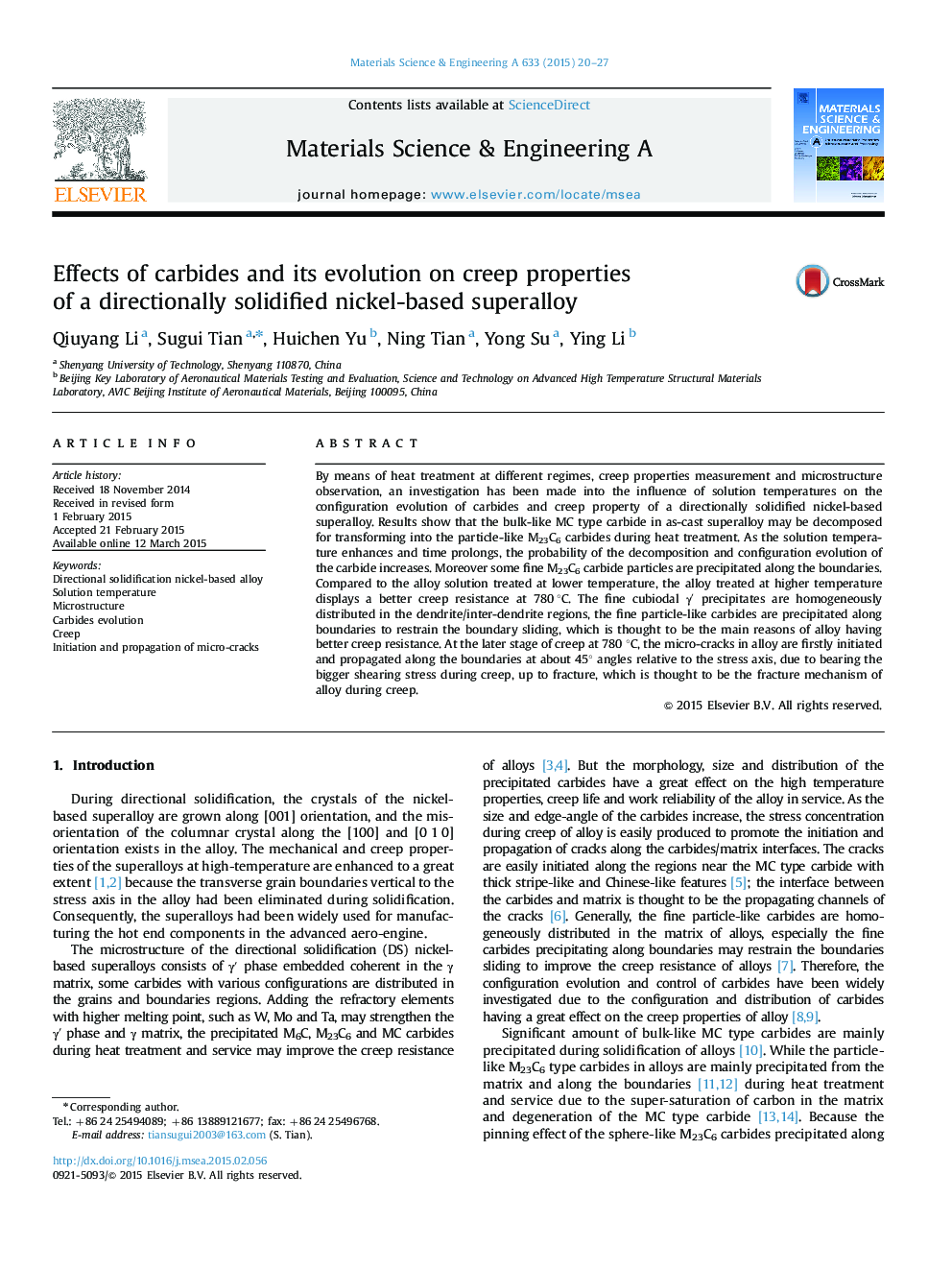| Article ID | Journal | Published Year | Pages | File Type |
|---|---|---|---|---|
| 1574279 | Materials Science and Engineering: A | 2015 | 8 Pages |
Abstract
By means of heat treatment at different regimes, creep properties measurement and microstructure observation, an investigation has been made into the influence of solution temperatures on the configuration evolution of carbides and creep property of a directionally solidified nickel-based superalloy. Results show that the bulk-like MC type carbide in as-cast superalloy may be decomposed for transforming into the particle-like M23C6 carbides during heat treatment. As the solution temperature enhances and time prolongs, the probability of the decomposition and configuration evolution of the carbide increases. Moreover some fine M23C6 carbide particles are precipitated along the boundaries. Compared to the alloy solution treated at lower temperature, the alloy treated at higher temperature displays a better creep resistance at 780 °C. The fine cubiodal γⲠprecipitates are homogeneously distributed in the dendrite/inter-dendrite regions, the fine particle-like carbides are precipitated along boundaries to restrain the boundary sliding, which is thought to be the main reasons of alloy having better creep resistance. At the later stage of creep at 780 °C, the micro-cracks in alloy are firstly initiated and propagated along the boundaries at about 45° angles relative to the stress axis, due to bearing the bigger shearing stress during creep, up to fracture, which is thought to be the fracture mechanism of alloy during creep.
Related Topics
Physical Sciences and Engineering
Materials Science
Materials Science (General)
Authors
Qiuyang Li, Sugui Tian, Huichen Yu, Ning Tian, Yong Su, Ying Li,
